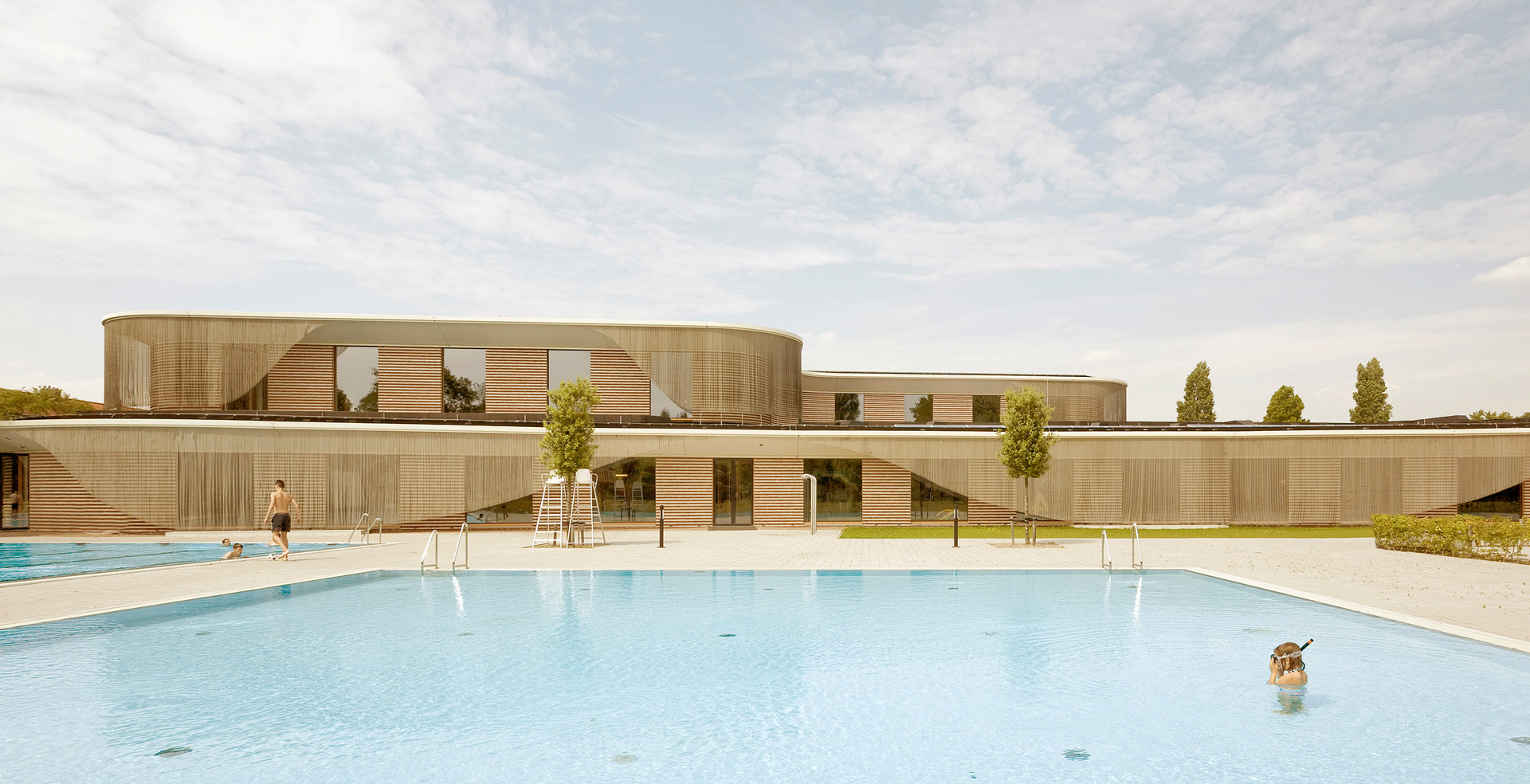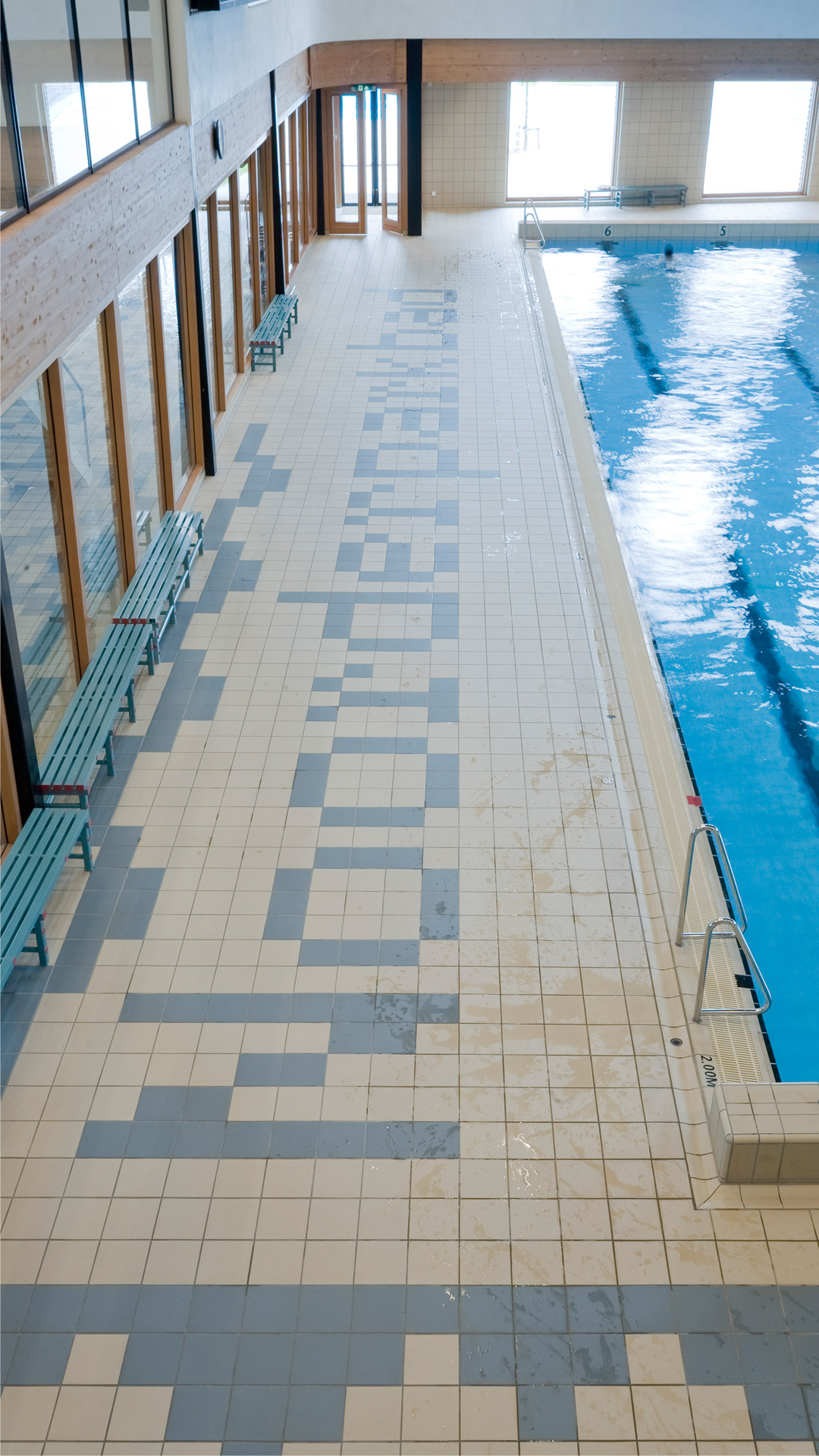案例設計
荷蘭 NOORDER公園泳池
| 案件名稱 | 荷蘭NOORDER公園泳池 |
| 地點 | 荷蘭 阿姆斯特丹 |
| 建築師 | de Architekten Cie. b.v. Keizersgracht 126 1015 CW Amsterdam |
| 池邊系統 | 芬蘭系統 |
| 泳池池磚 | Chroma tiles , Pool edge system Finland |
WELL-ROUNDED ARCHITECTURE
In Amsterdam, the cardinal directions are commonly used for the names of the city’s districts, parks and pools. Even when the city was hardly larger than its historical core and the rings of canals, there were already four churches named after the cardinal directions. So it wouldn’t come as a surprise that the part of the city on the ‘other’ side of the IJ River is called Amsterdam Noord, and one of its parks the Noorderpark.
Within this park, a new indoor and outdoor pool complex has been built, designed by Branimir Medić, one of the partners of Cie. In line with the undeniable logic of it all, the pool complex is named after the park it is situated in: Noorderparkbad. The name of the pool complex is spelled out in its brick facade, which is one of several references in Medić’s architecture to the expressionism of the Amsterdam School of the 1910s and 1920s. Amsterdam School architects like Michel de Klerk and Piet Kramer indulged themselves in the most fantastic brick architecture, and sometimes used the same trick of writing the name of the building in masonry.

The sensuous curves of Medić’s pool building allude to the Amsterdam School as well, one of the most distinctive styles of architecture Amsterdam has produced in the modern era. If such references in themselves would already be appropriate for any new building in the Dutch capital, it is even more so in the Noorderpark which is surrounded by garden-city-like neighbourhoods built in the style of the Amsterdam School.
Medić has been living and working in the Netherlands for more than 25 years, and he is completely at home in Dutch architecture. Yet he has managed to maintain a remarkably fresh perspective on the built environment in his adopted home country, allowing him to see the city and its architecture in ways that Dutch architects are rarely able to. This becomes clear in his highly original pool complex, with its streamlined shape of brick and glass which is partially veiled by elegant metal ‘rain curtains’ that collect the precipitation. In this project, Medić has reinterpreted the expressionist ideal of total works of art, in which exterior and interior are one comprehensive and unified whole. Medić has conceptually approached the building as one large, hollowed-out object made of clay, with brick on the outside and ceramics on the inside.

This totality is the setting for a pool whose main function is recreational. Hence Medić’s decision to approach it as a bath, for leisure and relaxation, rather than purely as a swimming pool. Some of the spaces are low, for conventional pool standards that is, which gives a snug intimacy to this complex, and in an almost casual way adds to its sustainability. By reducing the volume, the energy consumption is significantly lowered, to a level where the building, which generates most of its own energy through solar panels on the roof, has become a nearly energy-neutral project.

Just as the building appears from the outside as a one-piece object, the interior is conceived as well-rounded whole as well. The ceramics of Agrob Buchtal which have been applied throughout the building approximate in colour the soft yellow of the brick exterior. The tiles cover the floors and walls around the pool and continue seamlessly in the locker rooms, the entrance and café area.
The only standard product in this building is the white tiles in the pools – all other ceramic tiles are custom-made. The Finland pool edge system has been made in the same beige as the 25 x 25 cm tiles throughout the building. Just like the light blue ones, the beige tiles are in colours made especially for this project. They are unglazed, which gives a soft and tactile character to the spaces. The quiet colour of the ceramics in this pool is complemented by the blond wooden beams of the roof construction, which, together with the filtered daylight, creates interiors with a remarkably homey and warm atmosphere.

The surfaces of light tiles are ‘tattooed’ by artist Hugo Kaagman with pale blue patterns, lines, and letters spelling the name of the pool. There is a double layer here. On the one hand, it can be read as another allusion to Amsterdam School and the almost obsessive urge of its designers to decorate every available surface; on the other hand, it is hard to miss how the decoration of the built skin echoes the tattooed bodies of people relaxing in the pool. This underlines that this architecture appeals to both to those who are in the know about the Amsterdam School and to people who are here to simply enjoy a splash. It is also reflected in the prizes this architecture has received. It rarely happens that professionals and laypeople share the same opinion, but here they do. In 2016 the Noorderparkbad both received the jury award and won the public vote for the Amsterdam architecture award, A.A.P.

資料來源: Agrob-Buchtal 官網

